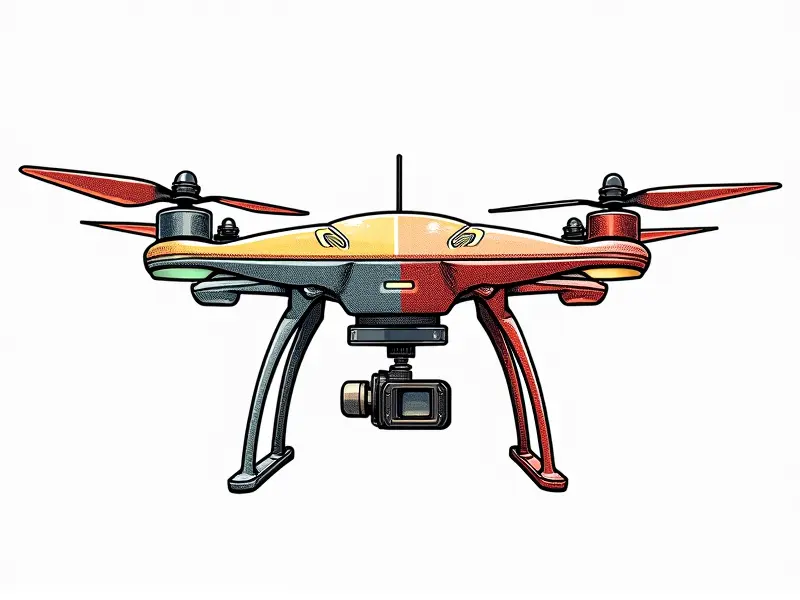Drone autopilot accuracy

Drone Autopilot Accuracy: Best Practices and Innovations
The use of autonomous drones has revolutionized industries such as agriculture, construction, surveying, and more. Central to the functionality and reliability of these unmanned aerial vehicles (UAVs) is their autopilot system, which ensures precise navigation and operation. This article delves into best practices for enhancing drone autopilot performance, compares leading systems' accuracy, and explores innovations driving better precision.
Best Practices for Enhancing Drone Autopilot Performance
To maximize the efficiency of a drone's autopilot system, several best practices should be followed:
- Maintain Regular Updates: Keep your drone’s firmware and software updated to ensure compatibility with new features and improvements.
- Calibrate Sensors Thoroughly: Proper calibration of sensors like accelerometers, gyroscopes, and magnetometers is crucial for accurate flight data.
- Optimize Flight Parameters: Adjust parameters such as altitude hold, velocity control, and waypoint navigation to suit specific mission requirements.
Comparing Leading Drone Autopilot Systems' Accuracy
The market is saturated with various autopilot systems designed for drones. Some of the leading contenders include PX4, ArduPilot, and DJI's A3 and N3 systems:
- PX4: Known for its robustness and flexibility across different platforms.
- ArduPilot: Widely used in hobbyist and commercial applications due to its open-source nature and extensive community support.
- DJI A3/N3: Offers high precision and reliability, making it a top choice for professional-grade drones.
Innovations Driving Better Drone Autopilot Precision
New technologies are continually pushing the boundaries of drone autopilot accuracy. Some notable advancements include:
- Machine Learning Algorithms: Enhancing real-time decision-making and adaptability.
- Synthetic Aperture Radar (SAR): Improving navigation in GPS-denied environments.
- Advanced Inertial Measurement Units (IMUs): Providing more accurate orientation data.
Real-World Applications of Precise Drone Autopilots
Precise autopilot systems are integral to various applications:
- Agriculture: Monitoring crop health, spraying pesticides accurately.
- Surveying and Mapping: Creating detailed 3D models of terrain.
- Construction: Site inspection, progress monitoring, and safety checks.
Common Challenges in Drone Autopilot Calibration
Calibrating a drone's autopilot system can be complex due to several challenges:
- Environmental Interference: Magnetic fields, temperature variations affecting sensor readings.
- Sensor Drift: Gradual changes in sensor accuracy over time requiring periodic recalibration.
Advanced Techniques for Enhancing Drone Autopilot Precision
To further refine autopilot performance, consider these advanced techniques:
- Data Fusion: Combining data from multiple sensors to improve overall accuracy.
- Kalman Filters: Implementing algorithms that predict and correct sensor errors in real-time.
The Future of Drone Autopilot Precision
The future holds exciting possibilities for drone autopilots, including:
- Increased Integration with AI: Leveraging artificial intelligence for smarter navigation and decision-making.
- Better Handling of Complex Environments: Enhancing performance in urban settings or areas with dense vegetation.
Factors Affecting Drone Autopilot Accuracy
A variety of factors influence the accuracy of a drone's autopilot system, including:
- Sensor Quality and Placement: High-quality sensors placed correctly reduce errors.
- Environmental Conditions: Weather conditions like wind can impact flight stability.
Maximizing Autopilot Performance in Drones
To achieve optimal autopilot performance, focus on these key areas:
- Regular Maintenance: Ensure all components are functioning correctly.
- Customized Settings: Tailor settings to specific mission requirements for better results.
Understanding Drone Autopilot Error Margins
Error margins in drone autopilots can be attributed to various sources:
- Sensor Errors: Inaccuracies inherent in sensor readings.
- Navigational Challenges: Difficulties encountered during flight affecting accuracy.
Enhancing GPS Accuracy for Drones
To improve GPS accuracy, consider the following strategies:
- Use of RTK/GNSS: Real-time kinematic (RTK) and Global Navigation Satellite System (GNSS).
- Satellite Antenna Placement: Ensuring optimal placement for maximum signal reception.
Conclusion
The accuracy of a drone's autopilot system is paramount to its effectiveness in various applications. By adhering to best practices, leveraging innovative technologies, and addressing common challenges, operators can significantly enhance the precision and reliability of their drones. As technology advances, the future promises even greater capabilities for autonomous flight.

